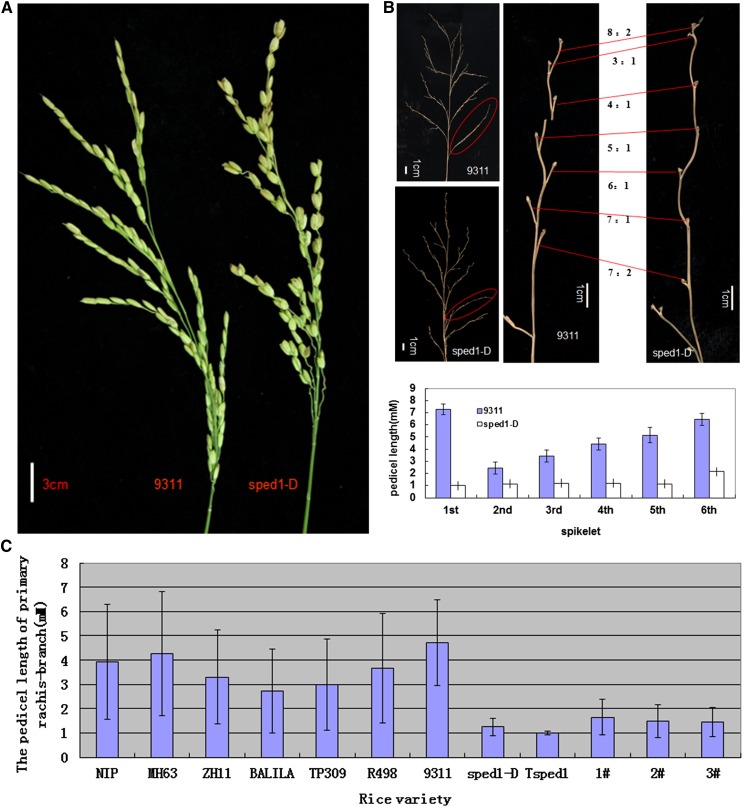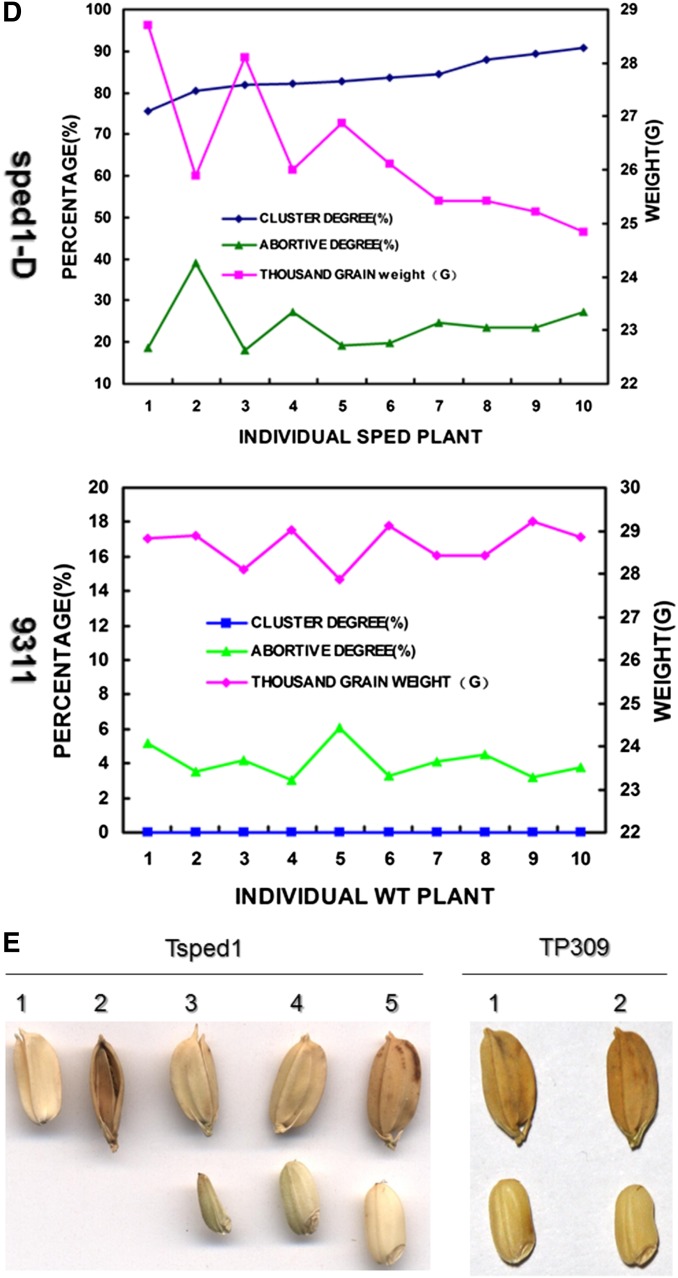Figure 1.
The phenotype of the panicles of the sped1-D mutant. (A) Cluster spikelets of sped1-D (right) vs. the wild type, 9311 (left). (B) Comparison of pedicel lengths in secondary branches between sped1-D and 9311. The ratio of the lengths of pedicels 1–6 on one secondary branch from the same position in TP309 and sped1-D (left); statistical analysis of the length of six pedicels on secondary branches (right). Error bars indicate standard error (SE) for sevenreplicate experiments. (C) Pedicel lengths of secondary branches in seven rice varieties, Tsped1, sped1-D, and three hygromycin-positive T0 complementation transgenic plants (1–3). Error bars indicate SE for seven replicate experiments. (D) The degree of abortion and thousand-grain weight of sped1-D seeds are negatively correlated with the degree of clustering in spikelets. (E) Five types of seeds are present in the mutant Tsped1, normal glumes, and paleas but without kernels; 2, abnormal paleas and without kernels; 3–5, seeds with normal kernels but altered grain filling.


